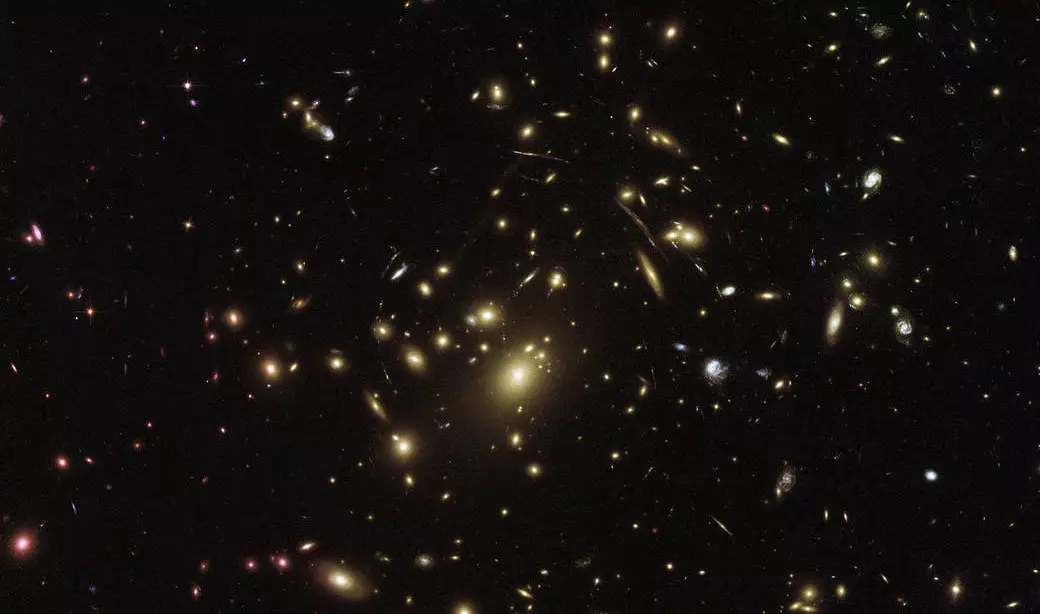The heavens proclaim the glory of God. The skies display his craftsmanship.
This exquisite verse from Psalm 19:1, NLT, suggests one of the purposes of the designed universe:
The universe shows the majesty of its Creator.
In addition to the heavens, God’s glory is also demonstrated in many other parts of his creation. Consider:
- the splendid intricacy of a living cell,
- the complex nature and
- the stunning diversity of life on earth,
- and the mathematical precision of the physical science laws.
These are all indicative of the clever craftsmanship, immense intelligence, and perplexing power of the universe’s Creator.
Astronomy
From our observations of outer space, we now know a typical galaxy teeming with about one-hundred billion stars. Included in this star cluster are more heavenly bodies than the total number of people who have ever lived on earth.
Light-Years
The whole assemblage is scattered across a massive expanse of space, typically over 100,000 light-years in diameter. Although a light-year sounds like a unit of time, instead it is the distance traveled by light in a year at its measured speed of about 300,000 kilometers per second.
Calculating this out, a light-year is equal to 300,000 kilometers/second times 86,400 seconds/day times 365 days or about 10 trillion kilometers, which equals roughly 6 trillion miles. Predictably, galactic systems are accurately described as “astronomical” in size. For comparison, earth’s roughly 13,000-km diameter is less than one-twentieth of a light-second.
Mind-Bending Numbers
To understand the scale of such immense distances, we must take a moment to understand the magnitude of these large numbers. The number 1,000 is easy for us to understand. At the rate of one number per second, a person could count to 1,000 in 1,000 seconds or about 16 minutes.
However, if the same person counted to a million, he or she would need more than two weeks to complete the task of counting at the rate of one number per second, assuming he or she counted for 16 hours per day. At the same rate of one number per second for 16 hours per day, it would take this person nearly 50 years—the better part of an entire human lifetime—to count from one to one billion. At the rate of one number per second, it would take a person 11.57 million days, or about 31,709 years, to count to one trillion.
Our Hometown
The Milky Way galaxy is home to planet earth. It contains over 100 billion (1.0 x 1011) stars and is recognized to be a fairly “typical” galaxy. The Bible says that God calls each star by their names (Ps. 147:4; Isa. 40:26). How amazing is that! His knowledge is beyond our measure or comprehension.
When one considers the vastness of the Milky Way, with its 100 billion stars, innumerable nebulae, and countless star clusters, the overwhelming supremacy of the Creator becomes clear.
Yet, the Milky Way galaxy is not the only one. God has created a myriad of galaxies in a wide array of shapes and sizes.
- Some galaxies are spiral, like the Milky Way.
- Others are elliptical in appearance,
- and some galaxies have configurations that can only be described as “irregular.”
- Many galaxies come in clusters.
The Milky Way belongs to a cluster of a few dozen galaxies called the “Local Group.” Some star clusters are much larger than this. The Virgo cluster has about 2,000 galaxies. Clusters of galaxies are organized into even larger superclusters—clusters of clusters.
Superclusters show God’s organization on the largest scale; they form an intricate web of strings and voids throughout the observable universe—and he knows all of them (and all of us) by name. Certainly, the universe demonstrates his omniscience.
Contemplating all this brings to mind Psalm 8:3-4:
When I consider your heavens, the work of your fingers, the moon and the stars, which you have set in place, what is man that you are mindful of him, the son of man that you care for him?
It is amazing that the God who created such a universe would be concerned with something as small as human beings. Yet, Scripture makes it clear that human beings are very important to God, and our place in the universe is very significant to Him.
It is my hope that through this series of blog posts you will come to realize the uniqueness of His cosmic design as we explore the wonders of His universe together.







